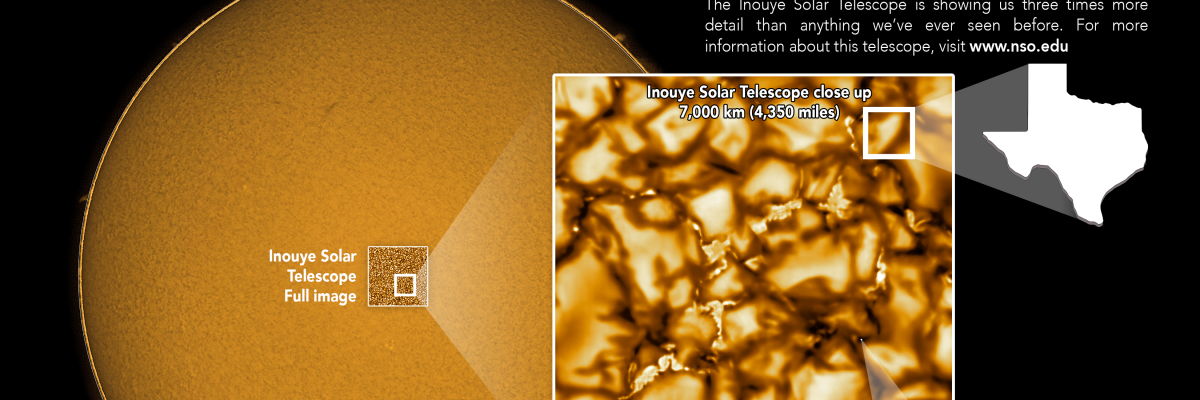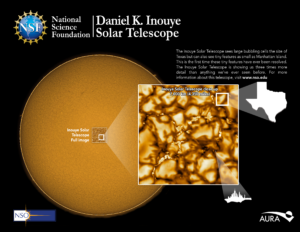The sun is the nearest star to Earth. We are used to enjoy its warming rays here on our planet, 147 million km away (approx 93 million miles away).
Now, the Daniel K. Inouye Solar Telescope in Maui Hawaii reveals initial images of the sun’s fiery surface in greater detail than ever before.
As detailed by the National Science Foundation release: “The cell-like structures — each about the size of Texas — are the signature of violent motions that transport heat from the inside of the sun to its surface. That hot solar plasma rises in the bright centers of “cells,” cools, then sinks below the surface in dark lanes in a process known as convection.”
Learning about the sun, its surface and eruptions can aid scientist to understand processes affecting our planet, neighboring planets as well as space travel in general.
Images courtesy of the National science foundation. Credit: NSO/AURA/NSF









